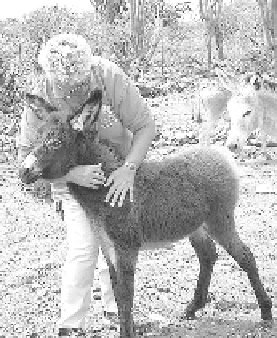Travel Reference
In-Depth Information
raised front porch is quite grand. The aqua-colored building next door is
the restored
Customs Office
.
Heading north along the waterfront, you'll see dozens of sailboats in the
harbor, and soon come to the open-air
Venezuelan Fruit Market
. The
uninhabited offshore island of Klein Bonaire is directly out from the mar-
ket. Grab a piece of fruit from the vendors or pick up a drink at Harborside
Mall and move on to
Wilhelmina Park
, a fine place to rest up before you
hike to the
Bonaire Museum
.
Museo Boneriano is housed in a century-old building that has been
restored to its former glory. Architecture fans will spend more time exam-
ining the mustard-colored plantation-style building than its contents. The
museum features a fine shell collection, as well as photos, maps, and his-
toric artifacts. There is an exhibit of Bonaire mythology titled “First
Bonaireans” by local artist Winfred Dania. It's on the northeast side of
town, beyond the athletic stadium, near the Catholic church, at Kaya
Sabana and Kaya J.C. van der Ree. Admission is about $2 and the doors
are open Monday-Friday, 8 am-noon, and 1:30-5 pm,
717-8868.
South of Kralendijk
Near the airport, off the main coastal road leading out of Kralendijk, a sign
points down a rutted dirt road to the
Donkey Sanctuary
. Take time to
stop in for a visit. If she isn't busy with a sick or injured animal, founder
Mariana Melis will show you around and let you pet and feed some of the
sweet-natured orphaned and homeless burros she's taken in.
Save the Donkeys
The boarders at the Donkey Sanc-
tuary are only a few of the 600 or
more wild donkeys on Bonaire who
descended from the beasts of bur-
den that were once vital to the is-
land's economy. The first animals
were brought in during the mid-
1800s to haul people, water, crops
- anything that need to be carried
from one place to another. They
were especially useful in the salt
flats because they had an amazing
memory and, after a few trips up
and down the same path, could be
counted on to deliver their load of
salt and return for another without
a human attendant.
Merina Melis with a baby don-
key at the Donkey Sanctuary
(photo by Martin DeWeger)







Search WWH ::

Custom Search